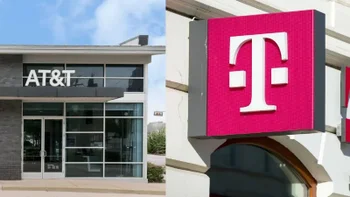New technology turns glass windows into 5G base stations improving coverage

5G networks employ spectrum consisting of higher frequencies than 4G and this poses a little problem. If there's one thing that you might have noticed from our years of covering 5G, the higher the frequencies, the shorter the wavelengths. That is why low-band airwaves are preferred for national 5G networks since they can cover more ground, albeit with a slower data speed. This one characteristic of spectrum explains why Verizon and AT&T have followed T-Mobile into using more mid-band spectrum instead of mmWave even though the latter delivers the fastest data speeds.
Turning glass windows into 5G base stations requires the use of a glass antenna
This is also why network operators need to employ more base stations for use with their 5G networks. Besides taking up space, they are just not pleasant to look at. However, a solution has been discovered in Japan where there is a lack of space for the installation of 5G base stations. In addition, carriers in the country are forced to share infrastructure. But the use of a glass antenna has turned glass windows into base stations and this discovery could change things when it comes to expanding coverage of 5G wireless service.

Using a glass antenna turns a glass window into a 5G base station. | Image credit-IEEE Spectrum
It was just last month when JTower, a Japanese communications company, announced that it had deployed a glass antenna made by AGC. The latter is the largest glass manufacturing company in the world. Japanese wireless provider NTT Docomo was also involved and the first glass antenna was installed in a window in Tokyo's Shinjuku district.
"I don’t think the idea for using transparent conductive materials as an antenna existed before. The durability of the antenna was significantly increased by placing the conductive materials between glass"-Kentaro Oka, AGC
Shota Ochiai, a marketing manager at glass manufacturer AGC, said that the glass antenna is "the world’s first antenna that turns a window into a base station that can be attached to a building window inside and turn the outdoors into a service area without spoiling the cityscape or the exterior appearance of the building." In other words, a 5G base station can be replaced by a window that is part of a building. This allows the area to be used as a 5G network without ruining the aesthetics of the city or lowering the valuation of buildings in the area.
A base station is made up of an antenna and a wireless transceiver and there are 860,000 of them located in Japan on buildings, towers, and electric utility poles. The glass antenna uses transparent conductive materials along with transparent conductive resin. The materials are sandwiched between two sheets of glass. The thickness of the glass antenna can be modified based on any loss of signal or reflection of the signal. "The glass antenna uses our proprietary technology to smooth out the disruption in the direction of radio waves when they pass through a window," said AGC's Ochiai.
The glass antenna is optimized for signals in the C-band, perfect for Verizon and AT&T
The product is called WAVEANTENNA and it is installed on the interior surface of a window hidden away with placement at the top or the edges of windows. Cables will be seen but it still is an improvement over finding a location to place a 5G base station. WAVEANTENNA works with 5G signals in the sub-6GHz band which includes the low and mid-band airwaves favored by U.S. wireless providers these days.
AGC says that the antenna is optimized for use with signals in the 3.7GHz through 4.5GHz range. That almost perfectly dovetails with the 3.7GHz-4.2GHz range of the C-band mid-band spectrum favored by Verizon and AT&T. T-Mobile is still relying for the most part on the 2.5GHz mid-band spectrum it acquired in the Sprint acquisition.
Should the technology become widely used, it should be able to improve 5G coverage mostly in urban areas where it isn't easy to find locations to place base stations. In addition, using the WAVEANTENNA makes it easier for the proper installation height to be used.
The new technology might negatively impact the top companies involved in the production of 5G base stations such as Samsung Electronics, Huawei, LM Ericsson, Intel, Nokia, Qualcomm, ZTE, and NEC.
Follow us on Google News











Things that are NOT allowed:
To help keep our community safe and free from spam, we apply temporary limits to newly created accounts: